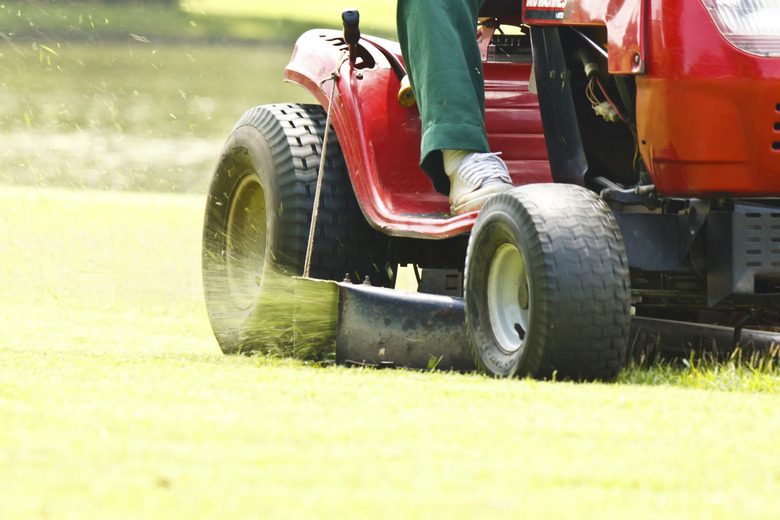Choosing A Riding Lawn Mower For Hilly Terrain
Gentle slopes add interest to the landscape, but they also add difficulty to your lawn care routine. Riding mowers in particular are dangerous on hills because of the potential for tipping over. Mowing in dry conditions with the riding mower going up and down the hill increases your safety. You can also make the task easier and safer by choosing the best riding lawn mower for the hilly job.
Lawn Tractors Versus Zero-Turn Mowers
Zero-turn-radius mowers allow you to zip around obstacles in the yard and make short work of a large lawn. Despite the convenience, this style of riding mower presents some drawbacks on slopes, especially on steep slopes. In tests performed by Consumer Reports, zero-turn models were difficult to steer when making a hard turn on a downhill slope. This could cause the mower to run into an object. Lawn tractors have an easier one-pedal stopping process, which makes it easier than a zero-turn-radius mower to stop if an obstacle is in the way on the hill. The zero-turn models also lack the traction of lawn tractors, making hills more difficult.
Stability
Because of the risk for rollovers and tipping, you want a riding mower with stability when mowing slopes. A mower with uneven weight distribution is more likely to tip on a hill. If the mower looks front-heavy or back-heavy, it may lack the stability you need to tackle your lawn hills. A low center of gravity and a wide stance help keep the mower stable on any terrain. The tires are also a factor in the stability and traction of your riding mower. Look for quality tires with plenty of grip so you don't slide down the hill.
Control Options
The U.S. Consumer Product Safety Commission recommends using riding mowers at a low speed on slopes. This allows you to mow continuously without shifting gears or stopping if you start going too fast. Check the speed options on the riding mowers you're considering to ensure you have a low-speed option. Check the shifting method so you can easily change your speed when you switch from mowing flat areas to mowing hills. Attachments are also a concern when mowing slopes. Attachments on a riding mower can affect the weight distribution. The U.S. Consumer Product Safety Commission recommends not using attachments on steep slopes.
Rollover Protection Structures
Some lawn tractors come with a rollover protection structure built onto the machine. The structure is a metal bar just behind the seat that is designed to protect the driver if the mower tips over on a hill. A seat belt on the mower is necessary. If you aren't strapped to the seat, you could still be crushed in a rollover. You'll pay more for a mower with the rollover protection structure attached. They typically come on higher end, commercial-grade riding mowers.
